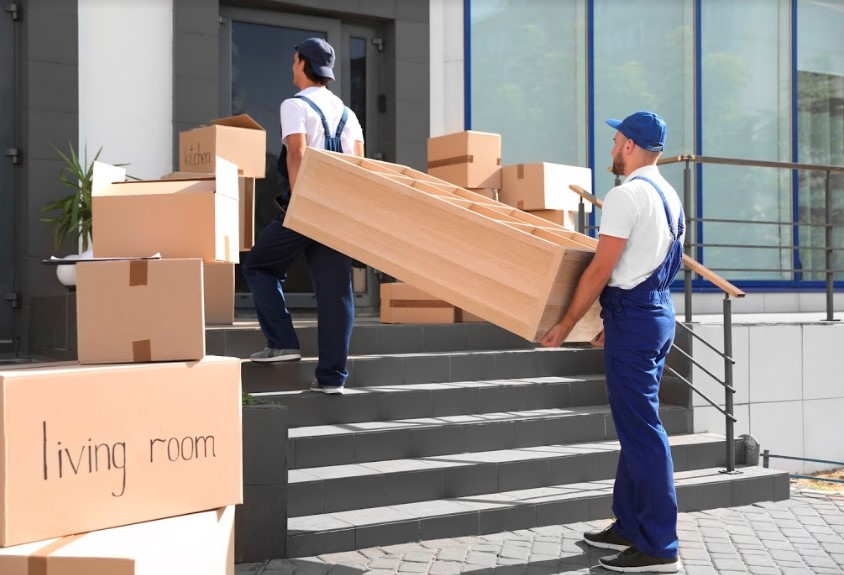There are many reasons why people move. A big move can be for college, a job, for relocating your family, or for your retirement. Regardless of the reason, moving is an exciting and very stressful event. But with careful planning, you’ll be able to do it even by yourself—with a little help from a moving company, of course. Here’s a guide that will help you from day one until you’ve stepped on that new welcome mat!
Get Organized
In a binder or folder, pack away all moving documents, receipts, and contracts. It will also contain your moving checklist, personal files, and important documents such as your social security card and passport. The binder should also house documents related to your new home, such as mortgages statement, leases, and more. Make sure to bring your binder with you when you move. Also, don’t forget to locate the nearest dump to discard any debris created during the moving process.
Create a Packing Timeline
If you have given yourself enough time to move, it’s important to do this gradually so you won’t miss anything. You probably have a lot of stuff in your house—even if you think you don’t, chances are you have things stored away that you may have forgotten.
There are two methods to go about packing your things. One is to do it one to two hours per day until the day of the move. This method is best for people with busy schedules and short attention spans. It’ll allow you to enjoy some free time, especially if you started months before moving day. The other, more traditional method is giving yourself a few days of intensive packing before the move. How long you take to finish will depend on how much stuff you have in your home.
Get Your Packing Supplies Ready
When choosing boxes and containers, make sure that you can get the most durable ones you can at a price you can afford. Moving fees are already expensive enough, so you don’t need to throw more money into items that you will eventually discard. Assess the sizes you need for clothing, knickknacks, books, shoes, and more.
You may need small boxes for canned goods, electronics, candles, and more; medium boxes for kitchenware and appliances; large boxes for sheets, pillows, towels, blankets, and beddings; and wardrobe boxes where you can hang clothes in hangers. Services like box rental and storage from companies like Boxbee can help during your move as they pick up, store, and deliver the boxes to your new home. Additionally, they offer packages depending on the number of rooms you will be packing for.
Get a good amount of tape, especially if you have a lot to pack. Don’t skimp on tape because you might run out and leave other boxes opened. You want to protect your stuff, not get damaged. Acquire bubble wrap and packing paper as well, especially if you have fragile items. It’s likely that you will need to purchase them both. You also have the option of using other wrapping materials, such as towels, t-shirts, and thin sheets. You can also use large garbage bags to segregate items that you will have to discard and donate. Just make sure to label them so you won’t mistake one for the other.
Here’s a cheap moving hack tip: you can get packing supplies for free from stores that are willing to give them out to save space. You can also use old newspapers and magazines to wrap items in. Use trash bags to cover clothes in hangers and reuse them after moving. Use hampers, laundry baskets, trash bins, and suitcases to secure items that will fit.
Prepare the Budget for Moving
Using spreadsheets, determine how much you’ll have to set aside for the entire movie—include the mover’s fee and transportation cost, leave some for miscellaneous once you arrive at the new home. If you skip this step, the move might cost you more than you expected. Remember to keep proof of expenses throughout the entire process.
Research Professional Movers
Take the time to research a reputable moving company. Contact the companies you are considering for a quote—not only will this help you budget accordingly, you’ll be able to find the best deal among a few different options. On your end, to help with costs and provide an accurate quote, you can prepare your stuff and make sure that you’re only bringing the essentials you want to keep to your new home.
Choose to hire a company during the offseason and anytime during the middle of the month or the week. Discuss the following with the movers: cost of service, size of move, distance, date and season, insurance, and more. If you’d like more information, you may want to check out these 10 tips for saving money when using a moving company.
If you don’t have as much stuff to move, you can use alternatives such as renting a moving truck to drive on your own. You can opt to rent a portable storage container that will be dropped off at your place. Fill with your stuff at your own pace that the company will pick up and move.
Seek Out Available Storage Units
If you have a list of items that you need to store away temporarily, you will need to research the storage facilities in your area. Note how much it will cost and for how long you will need it. It’s imperative to plan it carefully so you won’t overspend your moving budget.
Assess Your Household Items
Know that you don’t have to take everything with you. You may have accumulated things during your stay in your current home, but you can choose to keep, dispose of, sell, or donate your belongings in order to make packing and moving easier. Gradually go through each room. Assess what you want to bring to your new home and have a separate container for the others. You can take inventory of your things and clean the cabinets and cupboards while doing this.
Start Packing
Packing is a joint effort if you’re a family, or a married couple, or roomies. But if you live alone, you can ask a trusted friend to spend some time to help you pack. It can be fun if you’re the type who won’t care what’s in each box. Or you can have your friends help out moving the boxes into the truck.
One rule of thumb is never to pack heavy items in large boxes. That would be detrimental, and it’s riskier to drop and break something, or worse, hurt someone. Place them in smaller boxes that won’t need two people to carry.
In your first days of packing, start with the rooms you won’t use much, such as the study or media room. Place the essential items in your bedroom where you can use them to relax, such as gaming consoles or your music player. As moving is a stressful time, you’ll want to allow yourself some leisure time.
It’s also important not to overthink what you’re doing. It’s a good time to learn how to pack tricky items and learn how to use the space in your containers. You’re also encouraged to take photos of your valuables like jewelry, art, electronics, and others so you can have a record of them in case anything is lost or broken. If you have packing labels, give your friends the instructions to packs items into specific boxes.

Get Rid of Unwanted Stuff
If you have appliances or furniture you can live without, donate them instead. There are charity organizations that will pick them up if you don’t have a vehicle yourself. Research online if the following charities are near you:
- Good Will
- Salvation Army
- Pickup Please
- Furniture Bank Network
- Habitat for Humanity
- AMVETS National Service Foundation
- PickUpMyDonation.com
- The Arc
If you have junk stored away in the garage, you can also hire a junk removal service so they can clear it for you. That last thing you want is to leave a mess in your soon-to-be-former-home. Hiring the service will allow you to focus on what’s being taken out of your garage. Just understand that hiring the service will cost you. It’s another decision that you’ll have to make.
Understand Professional Moving Rules
If you’ve already selected your moving company, try to keep in mind of the safety rules that they’ll give you. They are typically about flammable items that should not be in the truck. For example, the container of important files and documents should be on your person at all times instead of at the back of the truck. Remember to have enough cash to tip the movers after the job.
Prepare Your Old Home
Even if you’ve closed the deal with a signed contract and your stuff are packed away, you still need to make sure that you’re leaving your old home in good order. If you want to make a good impression on the next homeowners:
- Clean the home and repair holes and cracks.
- Defrost your refrigerator and drain contents before loading into the truck.
- Do a final walkthrough of the house to ensure that all nooks and crannies have been gone through.
This is especially key if you have been renting your current home—you want to be able to get your security deposit back from your landlord.
Furniture Arranging in the Moving Truck
You may have chosen a moving truck that you can drive yourself, or a portable storage container. Here are some tips on how to take advantage of the space inside your truck or moving container:
- Flip the chairs upside down so that the cushion is resting on top of the boxes. The space between the legs can now accommodate smaller boxes.
- There are two ways to position desk or tables: flip them upright in a vertical position, or upside-down. You can still place boxes, or furniture between the legs.
- Couches can be placed in a vertical position.
- Lean mattresses up against the wall inside the truck or container.
In Conclusion
For those experiencing their first move, or even for those who had done it many times, preparations can be very tiring and stressful. It’s important to allow yourself some time to make sure that everything goes smoothly as possible. You have options to help you move your things to save money. Most of the process is simply labor-intensive and requires your patience. Hopefully, this guide can shed some light on the process of moving.
 Chris Muller
Chris Muller
Chris Muller is a professional personal finance writer who has written for some of the largest financial publications in the world. Chris brings a BBA and MBA in Finance, along with a decade of experience in the field, to help break down complex financial topics into easily digestible pieces through his written content in an effort to assist others in better managing their finances. Chris is currently in pursuit of FI/RE, is an aspiring minimalist, loves craft beer, and is a dad two to kids.






